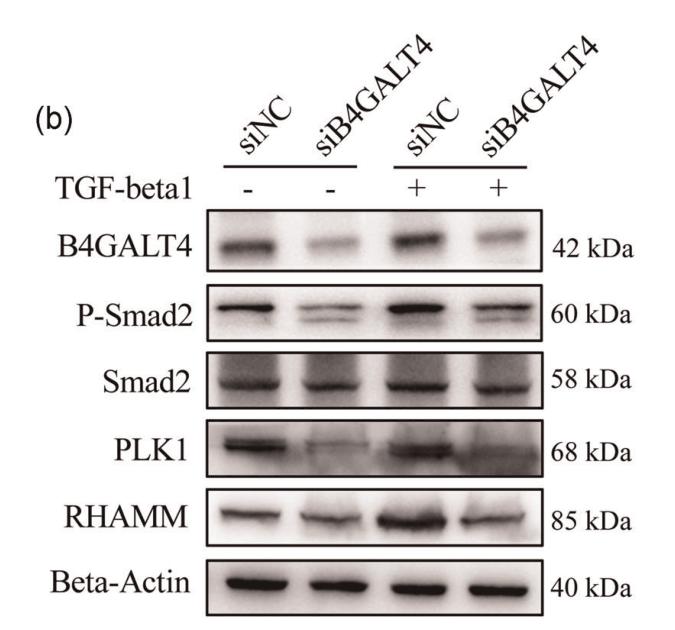CD168 Antibody - #DF4809
製品説明
*The optimal dilutions should be determined by the end user.
*Tips:
WB: For western blot detection of denatured protein samples. IHC: For immunohistochemical detection of paraffin sections (IHC-p) or frozen sections (IHC-f) of tissue samples. IF/ICC: For immunofluorescence detection of cell samples. ELISA(peptide): For ELISA detection of antigenic peptide.
引用形式: Affinity Biosciences Cat# DF4809, RRID:AB_2837160.
折りたたみ/展開
CD168; CD168 antigen; HMMR; HMMR_HUMAN; Hyaluronan mediated motility receptor; Hyaluronan-mediated motility receptor (RHAMM); IHABP; Intracellular hyaluronic acid-binding protein; MGC119494; MGC119495; OTTHUMP00000196920; Receptor for hyaluronan-mediated motility; RHAMM;
免疫原
A synthesized peptide derived from human CD168, corresponding to a region within the internal amino acids.
- O75330 HMMR_HUMAN:
- Protein BLAST With
- NCBI/
- ExPASy/
- Uniprot
MSFPKAPLKRFNDPSGCAPSPGAYDVKTLEVLKGPVSFQKSQRFKQQKESKQNLNVDKDTTLPASARKVKSSESKESQKNDKDLKILEKEIRVLLQERGAQDRRIQDLETELEKMEARLNAALREKTSLSANNATLEKQLIELTRTNELLKSKFSENGNQKNLRILSLELMKLRNKRETKMRGMMAKQEGMEMKLQVTQRSLEESQGKIAQLEGKLVSIEKEKIDEKSETEKLLEYIEEISCASDQVEKYKLDIAQLEENLKEKNDEILSLKQSLEENIVILSKQVEDLNVKCQLLEKEKEDHVNRNREHNENLNAEMQNLKQKFILEQQEREKLQQKELQIDSLLQQEKELSSSLHQKLCSFQEEMVKEKNLFEEELKQTLDELDKLQQKEEQAERLVKQLEEEAKSRAEELKLLEEKLKGKEAELEKSSAAHTQATLLLQEKYDSMVQSLEDVTAQFESYKALTASEIEDLKLENSSLQEKAAKAGKNAEDVQHQILATESSNQEYVRMLLDLQTKSALKETEIKEITVSFLQKITDLQNQLKQQEEDFRKQLEDEEGRKAEKENTTAELTEEINKWRLLYEELYNKTKPFQLQLDAFEVEKQALLNEHGAAQEQLNKIRDSYAKLLGHQNLKQKIKHVVKLKDENSQLKSEVSKLRCQLAKKKQSETKLQEELNKVLGIKHFDPSKAFHHESKENFALKTPLKEGNTNCYRAPMECQESWK
種類予測
Score>80(red) has high confidence and is suggested to be used for WB detection. *The prediction model is mainly based on the alignment of immunogen sequences, the results are for reference only, not as the basis of quality assurance.
High(score>80) Medium(80>score>50) Low(score<50) No confidence
研究背景
Receptor for hyaluronic acid (HA) (By similarity). Involved in cell motility (By similarity). When hyaluronan binds to HMMR, the phosphorylation of a number of proteins, including PTK2/FAK1 occurs. May also be involved in cellular transformation and metastasis formation, and in regulating extracellular-regulated kinase (ERK) activity. May act as a regulator of adipogenisis (By similarity).
Cell surface. Cytoplasm.
Expressed in breast cancer cell lines and in normal breast tissue.
研究領域
· Environmental Information Processing > Signaling molecules and interaction > ECM-receptor interaction. (View pathway)
参考文献
Application: WB Species: Human Sample: HCC cells
Application: WB Species: Human Sample: HepG2 cells
Restrictive clause
Affinity Biosciences tests all products strictly. Citations are provided as a resource for additional applications that have not been validated by Affinity Biosciences. Please choose the appropriate format for each application and consult Materials and Methods sections for additional details about the use of any product in these publications.
For Research Use Only.
Not for use in diagnostic or therapeutic procedures. Not for resale. Not for distribution without written consent. Affinity Biosciences will not be held responsible for patent infringement or other violations that may occur with the use of our products. Affinity Biosciences, Affinity Biosciences Logo and all other trademarks are the property of Affinity Biosciences LTD.



